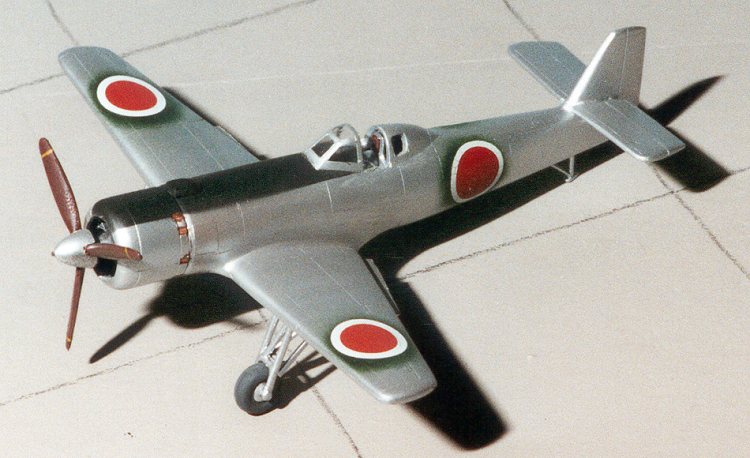
Aviation USK 1/72 Ki-115
|
KIT # |
AV 1001 |
|
PRICE: |
$10.00 |
|
DECALS: |
None |
|
REVIEW : |
|
|
NOTES: |
Short run and no longer available |

|
HISTORY |
In early 1945, it was realized that Japanese forces would soon run out of obsolete and obsolescent aircraft to use for suicide attacks, should the war continue on for much longer. In order to stave off this lack of aircraft, a decision was made to build a dedicated attack aircraft. It had to be easy to build in large numbers, easy to fly, and had to carry a single bomb.
The airframe was also to be able to take a number of different air-cooled radial engines in the 800 - 1,300 hp range. Speed was to be a bit over 200 mph with landing gear and 320mph without it. This was deemed fast enough to get through the defending fighters.
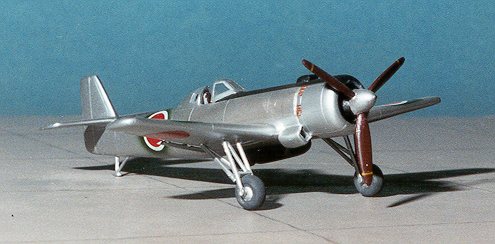 The aircraft was
designed by t the Mitaka Research Institute and Ota Manufacturing Company, Ltd
and called the Ki-115 Tsurugi (Sabre). The aircraft was the essence of
simplicity and was to be built by semi-skilled labor. The wings were all metal,
the fuselage was steel with a tin engine cowling and wooden tail assembly. The
landing gear was designed to be jettisoned after take-off as they would no
longer be needed.
The aircraft was
designed by t the Mitaka Research Institute and Ota Manufacturing Company, Ltd
and called the Ki-115 Tsurugi (Sabre). The aircraft was the essence of
simplicity and was to be built by semi-skilled labor. The wings were all metal,
the fuselage was steel with a tin engine cowling and wooden tail assembly. The
landing gear was designed to be jettisoned after take-off as they would no
longer be needed.
First prototype was completed in just a few weeks, first ground runs taking place in March 1945. As one could expect, the aircraft was a real handful. The stiff undercarriage had no shocks and was nearly impossible to taxi over the rough ground. This required a modification to fit shock absorbers. The aircraft completed basic flight tests in June 1945 with the redesigned undercarriage and the addition of auxiliary flaps on the inboard section of the wings. The first 104 aircraft were designed to accept solid fuel booster rockets to get the planes off the ground.
The prototype was built by Mitaka Research Institute followed by 104 production Ki-115a aircraft built by Nakajima. Production was also to be done by Showa Aeroplane Company, Limited, but was never started. The Navy was also to have its own version, but did not get beyond preliminary design.
From what photographs are extant of the aircraft, the plane was left in metal/silver paint. Those that had insignia painted on them only had a small area of camo paint around the Hinomaru. There is at least one airframe still extant and that is held by the Smithsonian. You can see pictures of it by clicking here.
|
THE KIT |
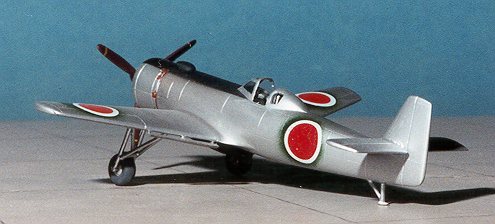 Aviation USK should be
congratulated on choosing such an esoteric kit for their first foray into the
wild world of limited run kits. This one came in a header bag with the
instructions printed on the inside of the header card. Not pretty, but good
enough.
Aviation USK should be
congratulated on choosing such an esoteric kit for their first foray into the
wild world of limited run kits. This one came in a header bag with the
instructions printed on the inside of the header card. Not pretty, but good
enough.
The single sprue was in a dark brown plastic, and very typical of the genre. The sprue gates were thick, the parts had lots of flash and the plastic was rather brittle. There was a single transparency that is about a scale foot thick! But that didn't matter; it was a Ki-115. Oh yes, there were also no alignment pins and the other attachment points were a bit vague!
Detailing of the kit is fair. The panel lines were engraved, though a bit light. The other parts were a bit soft in the detailing arena, but again, it was a Ki-115.
Did I mention that there were no decals?
All of that aside, it was a Ki-115, and I was quite happy to have it.
|
CONSTRUCTION |
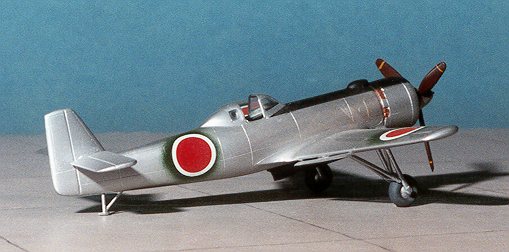 To say that there
was some clean up needed would be an understatement, however the fact that there
weren't that many parts did not make it an arduous task. The cockpit was rather
bare consisting of just a floor, seat, stick and instrument panel, but so was
the real plane. I wish I had the images of the real plane to use when I built
this kit back about 10 years ago. It would have really helped.
To say that there
was some clean up needed would be an understatement, however the fact that there
weren't that many parts did not make it an arduous task. The cockpit was rather
bare consisting of just a floor, seat, stick and instrument panel, but so was
the real plane. I wish I had the images of the real plane to use when I built
this kit back about 10 years ago. It would have really helped.
OK, the biggest fit problems. Well the first would be the bomb recess. I had no clue as to how to properly fill the rather prominent seam in it. I only hoped the large bomb would cover most of that. It was also a bit difficult to get the landing gear built. With no real guide pins, it was sort of an erector set thing. The end results worked OK, but it wasn't easy.
Another difficult part to fit was the cowling mounted oil cooler. It required a lot of filler, as did most of the kit, but hey, it is a Ki-115! The prop also seems to stick out too much, but that can be fixed by trimming the shaft if you desire.
|
PAINT & DECALS |
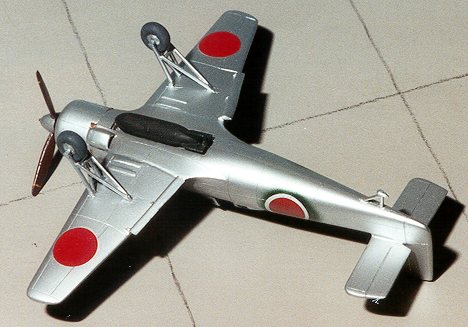 Painting is
actually quite easy. The whole thing gets an aluminum paint job. Then the
anti-glare panel is added with black paint. The bomb is also black. Where the
roundels go got a shot of uppersurface JAAF dark green, using Tamiya acrylics.
The decals came from a 1983 sheet put out by IPMS Spruce Goose. I think I messed
up and use white backgrounds that are too wide, but whose to say there wasn't
one painted that way!
Painting is
actually quite easy. The whole thing gets an aluminum paint job. Then the
anti-glare panel is added with black paint. The bomb is also black. Where the
roundels go got a shot of uppersurface JAAF dark green, using Tamiya acrylics.
The decals came from a 1983 sheet put out by IPMS Spruce Goose. I think I messed
up and use white backgrounds that are too wide, but whose to say there wasn't
one painted that way!
And there you have it, a Ki-115. I'm really surprised some resin kit maker hasn't done one of these as it is simplicity in itself. One think about the Aviation USK kit is that it really shows the prototype landing gear without the additional shock absorbers, though it does have the later addition of the flaps.
|
CONCLUSIONS |
Well, it really isn't a bad kit. It would be a great introduction to doing short run kits. Sure, it isn't as technically sophisticated as today's kits are. No etched brass, no resin, no metal parts, but it does need work getting it cleaned up and ready to build. That if anything else is what is needed for most low production kits of this type. Besides, it is a Ki-115!
|
REFERENCES |
Japanese Aircraft of the Pacific War by Rene J Francillon, Putnam, 1979
Copyright ModelingMadness.com. All rights reserved. No reproduction in part or in whole without express permission from the editor.
Review kit courtesy of me and my wallet!
If you would like your product reviewed fairly and quickly, please contact the editor or see other details in the Note to Contributors.